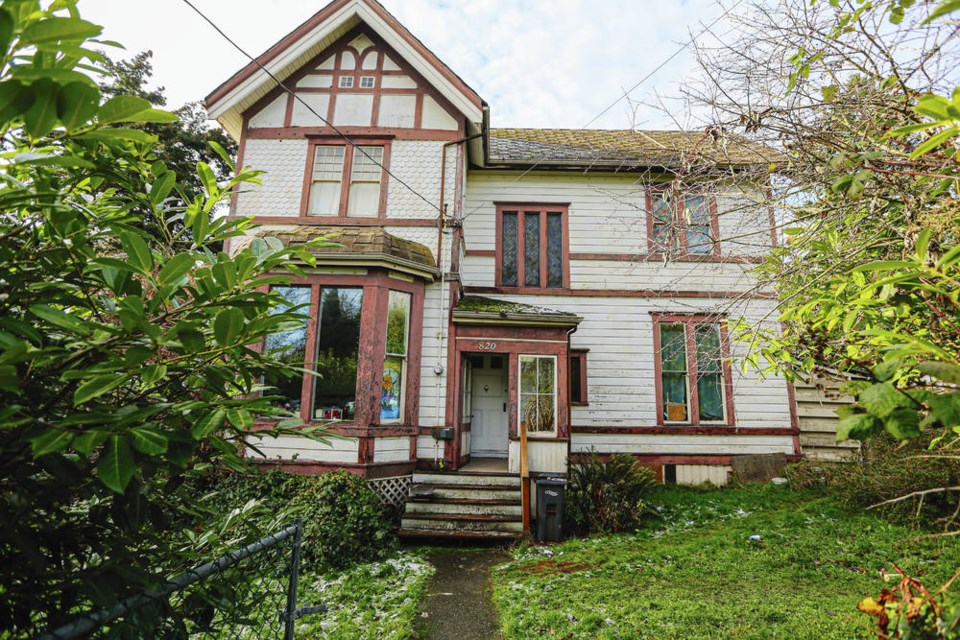Esquimalt council is wrestling with whether to allow a developer to tear down one of the township’s oldest homes.
Large and Co. has applied to demolish 128-year-old Tyn-y-Coed, a two-storey home at 820 Dunsmuir Rd. built by Hans Price, a clerk at the naval dockyard who named the home after his parents’ place in England, says a report to council. The developer wants to rezone the property and put up townhouses.
Council has delayed any decision until it gathers more information on the potential costs of saving the heritage-registered home, which was designed by John Tiarks, who later worked with famed architect Francis Rattenbury and served as a Victoria councillor before dying at 34 in a cycling accident.
A building assessment, ordered in July, concluded the house is in “fair condition” considering its age and lack of maintenance. Much of the home’s interior finishes, including the central staircase and balustrade, doors, window trim and picture rails are unchanged from when the house was built in 1892, the report says.
“The intact, original detailing of this historic building, as well as the people involved with its design and construction, give it value to the Township of Esquimalt.”
The building, however, does require significant upgrades, including a new concrete foundation, roofing repairs and other work totalling more than $280,000, the report says.
Kim Colpman of Large and Co. told council this week that the company, which bought the property three and a half years ago, applied for the demolition permit with a “heavy heart.” The firm specializes in infill housing and has a record of restoring and renovating existing homes where possible, she said. “Demolishing heritage assets is never our starting point.”
However, Colpman said, as with any project, this one comes down to economics: Proper restoration of the building would cost about $800,000.
“We explored how to do this,” she said. “We looked at keeping the home on site and adding density, but that was not financially viable. We looked at moving the home to a different site to allow for more density on Dunsmuir, which would have funded the restoration, but in the end, staff declined this plan.
“And now, I don’t see any other way forward.”
Nevertheless, council has asked staff to keep working with Large and Co. to see if they can agree on a development plan that would save Tyn-y-Coed.
Council also directed staff to get more information on the potential costs of designating the house a heritage site. Such a move could require Esquimalt to compensate the owner if the designation decreases the property’s market value, staff said. “The key factor that we’re going to have to determine, in terms of whether to grant a permit to demolish or whether to declare it a heritage site, is what that cost is going to be,” Coun. Ken Armour said.
Ken Johnson, president of the Hallmark Heritage Society, doubts Esquimalt would be on the hook for a significant amount, since the property would have to be rezoned to allow for a townhouse development. “The community does not have to grant [the developer] that right, and the property zoning would remain the same and there would be low loss of value,” he said.
Johnson argues that council should take steps to save the house, given its age, design and links to Esquimalt’s military history.
“Esquimalt is like other municipalities — they’re looking for increased density,” he said. “So they achieve that density by tearing down old houses and putting up more townhouses, if you will. We’ve got to save some.”
Esquimalt Mayor Barb Desjardins said in an interview that council heard from people all over the region about the importance of preserving Tyn-y-Coed. “We know that we have some very beautiful heritage buildings and we really have to come to grips with — are there ways that we can help others preserve those?” she said. “It isn’t something that we have fully considered to the point of giving tax breaks or those sorts of things, but maybe that’s an option.”



